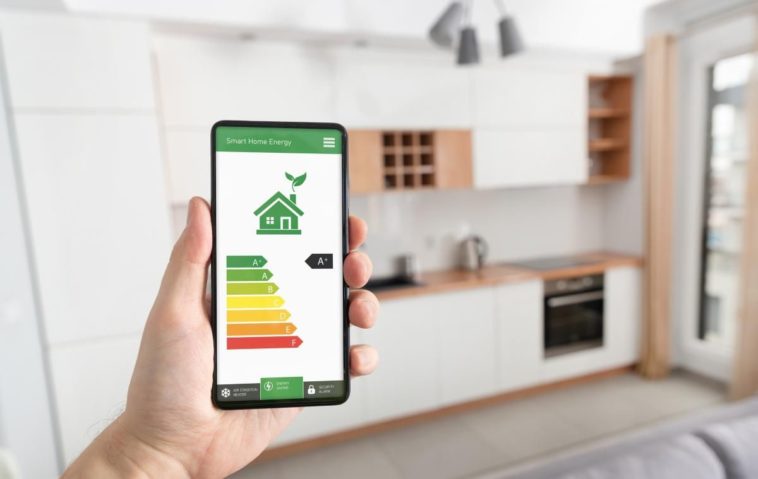Home Energy Audit Guide
Energy efficiency is more important than ever. Getting a home energy audit can be crucial for identifying any potential air leaks and other issues that could be keeping your energy use (and energy bills) high. Learn how a home energy audit can help you with energy efficiency upgrades to reduce your energy consumption.
What is a home energy audit?
A home energy audit, also referred to as a home energy assessment, helps you get a better idea of the amount of energy that your home uses. This audit provides you with a summary of your energy costs, how to save energy, and what renewable, energy-saving upgrades or repairs can help.
Scheduling a home energy audit should be the first step you take before making any sort of energy-saving improvements to your home. Renewable energy systems and energy-efficient appliances are more and more popular with homeowners, thanks to their limited energy consumption and the rebates offered for installing them. But before you install solar panels or a smart thermostat, make sure you get a home energy audit.
There are two types of home energy audits: do-it-yourself and professional.
Do-it-yourself home energy audit

simpson33 / Getty Images
Once you know what to look for, a preliminary home energy audit can be performed on a DIY basis. It is important, however, to know not only where to look but also the signs of energy inefficiency and how to test for them. Here are some of the main areas of the home and types of energy waste that you should examine.
Air leaks
Start by checking your windows, doors, outlets, and fixtures. These are external items on the perimeter of the house and the barriers between the temperature in your home and the outside environment. Get close and feel for any air leaks, and look for any damaged or missing weatherstripping.
Air leaks can result in elevated heating and cooling bills. The leaks can make it more difficult for your HVAC system to regulate temperature, requiring it to work much harder and expend much more energy to keep your home at a desired setting.
Insulation
Insulation is crucial to energy efficiency. The proper insulation can keep heat out in the summer while retaining it in the winter. When insulation is old or begins to wear down, it does not do its job as effectively, leading to elevated energy usage.
Take a look at the insulation in your attic. If it looks old, degraded, or worn down, it may be time to swap it out for something more current and efficient.
Ventilation
Like anything else, your ventilation system can become dirty and damaged over time. Preventative cleaning should be done each year to ensure that the system does not become clogged with dirt and debris.
Cracks or holes, meanwhile, allow air to escape instead of being distributed throughout the home. Look your vents and registers over thoroughly. Clean where necessary to ensure more thorough airflow, and for any that are damaged and need replacing.
Heating and cooling systems and thermostats
This is one of the most crucial aspects behind energy consumption. Inefficient and outdated heating and cooling systems can elevate heating and cooling costs substantially. While each of these factors comes into play, the HVAC system may be the most important one.
Old and outdated systems need to run more often to keep your home warm or cool. They also are typically less efficient at using the energy or fuel they consume. The more work required, the more energy used. That is why it is important the check the efficiency of your HVAC system and upgrade if necessary. Specifically, look for the Seasonal Energy Efficiency Rating (SEER) to help determine the efficiency of the system. The U.S. Department of Energy recommends looking for central air conditioners with a SEER of at least 15. New systems, specifically ones that are ENERGY STAR certified, are built to optimize energy usage and use less energy to achieve better results than older systems.
Additionally, upgrading to a smart thermostat can help you make your home more energy efficient. Read the EcoWatch review of the best smart thermostats for more details.
Lighting
The lighting in your home can play a multi-faceted role in energy consumption. In addition to the energy it uses to provide light, there is also the heat given off during use. Older bulbs not only require more energy to burn, but they give off much more heat. Both of these contribute towards elevated energy consumption.
New bulbs require less energy to provide brighter light and reduce the amount of heat given off at the same time. All of this equates to energy savings over those old, cheap, outdated lightbulbs. Plus, energy efficient LED bulbs last a lot longer, meaning you won’t have to replace them as often.
Appliances
Even your appliances can result in energy inefficiency. Like the other items on this list, older models tend to use more energy for the same tasks that a newer appliance could perform with a lot less energy.
Outdated refrigerators, dishwashers, and washing machines can use far more cold and hot water than is necessary, while old dryers can raise your energy costs significantly. Knowing your current usage levels versus what efficient appliances can offer today is key.
Professional Home Energy Audit

Visoot Uthairam / Getty Images
While DIY home energy audits are fairly effective and cost less, there are benefits to a professional energy audit. Professionals have a trained eye for the details to spot and are likely to find smaller issues that you may miss. They also do a more thorough inspection, covering the entirety of the home, and have access to specialized equipment. To schedule a professional audit, you can contact your local service provider or a certified HVAC specialist. Here are some of the steps you can expect from a professional assessment.
Room-by-room inspection
A professional energy audit will start with a room-by-room inspection. Each room has its own set of vents, windows, etc. that can present different energy consumption challenges. Simply checking one room or your home’s central systems is not enough to identify potential issues in the home. This inspection will help your professional narrow down the list of possible problems.
Exterior window and door inspection
Windows and doors can be a prime culprit for air leaks and flow issues. A home energy audit will inspect each of these points to ensure that they are properly sealed and are not letting out any warmed or cooled air. Improperly sealed windows, for instance, could be dragging down your home’s energy efficiency and can be remedied at a much lower cost than something like an HVAC system.
Blower door test
The blower door test helps to identify air leaks through the use of a special fan that depressurizes the house. The blower door test is performed both before and after the process of air sealing to ensure that the process is effective.
Thermographic scan
A professional has the tools that most DIYers do not. The thermographic scan is a perfect example. Thermography uses an infrared camera to detect certain heat patterns in the home. That means identifying areas where heat escapes as well as pockets where airflow is restricted.
Combustion appliance inspection
Those with natural gas appliances – water heaters, furnaces, stoves, etc. – require a check to ensure that there is no loss of gas during use. Not only can those gas leaks lead to elevated energy costs, but they can be potentially dangerous. Having those appliances inspected is a good idea for saving on costs and ensuring that your home is safe from carbon monoxide.
Analysis of past energy bills
Another helpful tool is looking closely at past energy bills. This is good for not only identifying base levels of energy consumption but can also give insight as to periods where energy usage may be higher. This gives your auditor a better idea of what usage looks like for the home on a month-to-month basis, and where any inefficiencies may be.
What are the benefits of a home energy audit?
There are two primary benefits of home energy audits: improved energy efficiency and lower energy bills. By performing the necessary upgrades, your home can reduce the amount of energy you use and save you money on your monthly energy bills.
Use less energy
Energy savings can vary on the changes made. According to the Department of Energy, a new HVAC system can save you anywhere from 20-40% on heating and cooling costs annually. Lightbulbs in particular can be quite efficient. New LED bulbs, depending on the type, can use anywhere from 25-80% less energy than standard incandescent lightbulbs.
Even if your overall energy consumption is reduced by 10% per month, the total amount of energy saved annually is nothing to scoff at. Newer appliances and systems can keep your home comfortable while reducing your footprint at the same time. Plus, many smart products allow you to control and monitor your home remotely with mobile apps.
Save more money
Energy-efficient windows can provide a savings of $101-$583 per year when replacing single-pane windows. A new heating and cooling system can save you hundreds of dollars. Lightbulbs will have a much more long-term impact, but shouldn’t be overlooked.
No matter how you cut it, there are massive savings to be had both monthly and annually from a more energy-conscious home. Certain upgrades have larger impacts than others, but there is no doubt that upgrading to energy-efficient lightbulbs, HVAC systems, windows, etc. can play a major role in your finances and energy conservation.
How to use your home energy audit
So, what do you do with the findings of your home energy audit? The primary takeaway is what appliances or areas of the home need to be upgraded. Any leaks will need to be addressed and any worn out insulation, roofing, or siding replaced.
Another focus should be upgrading to ENERGY STAR certified appliances, installing renewable or high-efficiency HVAC systems or water heaters, smart light fixtures, smart thermostats, and more. The number of energy-efficient products available today is very extensive, making it easy to find affordable ways to reduce your energy consumption.
What to look for when upgrading your home
When making energy-efficient upgrades to the home, it is important to not use just any old replacement materials. Look for products and appliances that have the following certifications: ENERGY STAR, LEED Certified, Green Seal, Rainforest Alliance, or FSC-Certified. Each of these gives you the promise that you are getting the most energy-efficient and environmentally responsible materials available. When it comes to water usage, check for the EPA WaterSense seal.
Ryan Womeldorf is a freelance writer who covers technology and consumer goods, including smart home tech. He is a husband and father of two (five if you count his pups).
From Your Site Articles
Published at Tue, 09 Feb 2021 00:24:31 +0000






Comments
Loading…